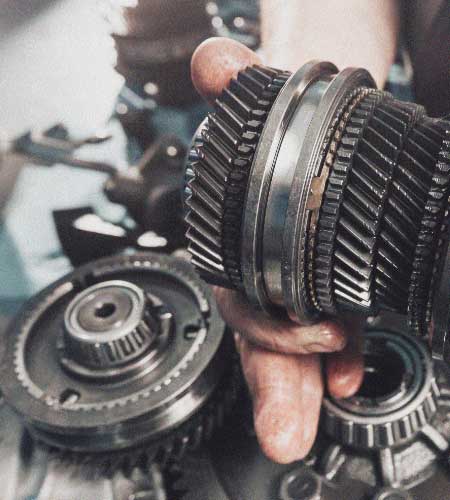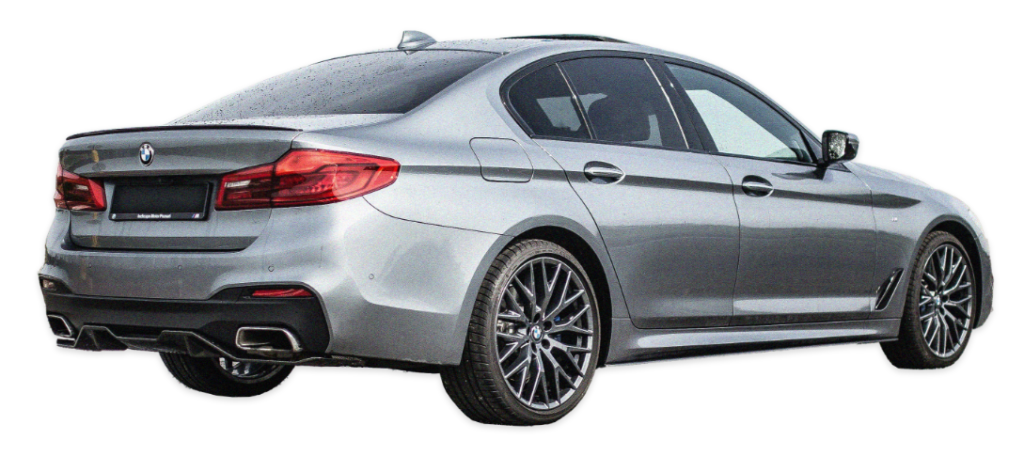TRANSMISSION REPAIR
believe the key to a successful business is the way interact with customers and the community. It may be a business centered on cars, but the truth is that this industry is a people business. look to treat every person that steps through doors exactly like would family, with honesty and integrity.
services — which are available to all makes and models — include general repair, preventative maintenance, performance and hot rod tuning, electrical services, transmission repair, off-road services, and more. facility is home to a state-of-the-art chassis dyno, that can test your vehicle’s performance and power by replicating real-world conditions.
EXTENSIVELY TRAINED, HIGHLY EXPERIENCED
understand how stressful auto care can be. Along with the problems you’re currently experiencing, you’re having to trust people to perform the proper repairs. If the job is done poorly, that could leave you with a bigger problem and fewer dollars in your wallet.
understand just how stressful this process is, and work diligently to ensure you’re provided with the peace-of-mind you deserve. service advisors help provide that, as they’ll happily chat with you to understand your situation, provide proper services, and answer any questions you may have. They’ll also set you up with free shuttle service and send you status updates via text or email while you’re away, so you always know what’s going on with your vehicle
facility is home to some of the finest techs in the industry, with all of them carrying an ASE Certification and one tech also holding the distinction of Ford Master Tech

Transmission Repair Services
Automatic Transmission
Automatic Transmissions shift between gears automatically to optimize driving, and changes gears based on the driver’s throttle pedal, vehicle speed, engine speed, and vehicle load. Typical automatic transmissions have 4-5 forward gear ratios, a Reverse, Park, and Neutral gear. Shifting gears occur automatically once the car is in Drive and there is no need for a clutch pedal or gear shift like there is in a Manual Transmission. Automatic transmission repair is complicated based on all the components that make it up, and you need to have any automatic transmission issues properly assessed by auto mechanics
Clutches
There are clutches in both automatic and manual transmission cars, and different types of clutches. When shifting gears, the clutch engages and disengages from the flywheel and transfers the torque through the transmission. Clutches should help your vehicle start and shift gears smoothly. The clutch in your car receives a lot of wear and can eventually wear out
Four-Wheel Drive Transmission
A four-wheel (4×4) drive vehicle has differential gears, both front and rear axles, and a transfer case attached to the transmission. Four-wheel drive vehicles demand maintenance on the transfer case, front differentials, rear differentials, and transmission fluids.
Front-Wheel Drive Transmission
If your vehicle has Front-wheel drive, the engine drives the front wheels only. The power is routed through the transmission to the final drive where it is split and sent to the two front wheels through the drive axles. The engine, transmission, and additional hardware is all located in the front of the car.
Manual Transmission
Driving a vehicle with a Manual Transmission requires using the clutch pedal and gear shift to manually shift gears based on the speed of the vehicle. Manual transmissions have been built with anywhere from two to eight gears. Front-wheel drive and rear-wheel drive are the two main configurations for manual transmissions. Typically, manual transmissions require less maintenance then automatic transmissions
Replacement
In motor vehicles, the transmission usually refers to the gear box, which uses gears and gear trains to transmit speed and tourque from a rotating power source to another device. You can have your car’s transmission replaced with a new, rebuilt, remanufactured, repaired or used transmission.
Transmission Repair Services
Transfer Cases
A transfer case is a part of a four wheel drive system found in four wheel drive and all wheel drive vehicles. The transfer case receives power from the transmission and sends it to both the front and rear axles. This can be done with a set of gears, but the majority of transfer cases manufactured today are chain driven. The transfer case is connected to the transmission and also to the front and rear axles by means of drive shafts
Service, Diagnose and Repair
Transmission repair is not something to take lightly. The transmission is connected to key parts of your vehicle and needs to be working properly for your safety. Transmission services include replacing filters and draining fluids to prevent transmission damage. Typical transmission issues that may lead to repair may include shifting issues, slipping, stalling, fluid leaking, and the service light turning on
Replacement
In motor vehicles, the transmission usually refers to the gear box, which uses gears and gear trains to transmit speed and tourque from a rotating power source to another device. You can have your car’s transmission replaced with a new, rebuilt, remanufactured, repaired or used transmission.
Manual Transmission
Driving a vehicle with a Manual Transmission requires using the clutch pedal and gear shift to manually shift gears based on the speed of the vehicle. Manual transmissions have been built with anywhere from two to eight gears. Front-wheel drive and rear-wheel drive are the two main configurations for manual transmissions. Typically, manual transmissions require less maintenance then automatic transmissions.
Front-Wheel Drive Transmission
If your vehicle has Front-wheel drive, the engine drives the front wheels only. The power is routed through the transmission to the final drive where it is split and sent to the two front wheels through the drive axles. The engine, transmission, and additional hardware is all located in the front of the car
Auto Repair Services
A well-functioning transmission is integral to the smooth operation of a vehicle. Over time, this important system requires tune-ups to keep it functioning properly. Transmission repairs can be costly, so stay on top of your vehicle’s transmission maintenance
What Does My Vehicle’s Transmission Do?
Basically, your transmission is what allows your car to move. It takes the power created by your engine and delivers it to your wheels so that you can move. To generate enough energy to move a car, your engine’s internal components must rotate very quickly. The transmission tones down all that power to a manageable speed so that you maximize your engine’s efficiency and remain in firm control of your car as you drive.
How Does a Transmission Work?
Modern car transmissions have many gears inside them to deliver the right amount of power at the right time to the car wheels. Based on which gear your car is in, your car will operate at different speeds efficiently.
Automatic Transmission vs. Manual Transmission
Manual transmissions rely on the driver shifting through the different gears by hand using a stick-shifter and pressing a clutch pedal. It’s up to the driver when the car shifts gears.
Maintaining Your Transmission System
Both automatic and manual transmissions need the proper amount of fluid in their systems, which should be changed out every 48 months or every 30,000 to 60,000 miles, depending on your vehicle’s maintenance schedule. This is especially true if you drive up a lot of hills or frequently tow with your vehicle.
ASE Certified Technicians can help with regular transmission flushes, as well as with complex transmission repairs.
Bearings
Entire Transmission Systems
Seals and Gaskets
Torque Converters
Transmission Filters
Transmission Flushes & Fluid Exchanges

Transmission Repair Services
Automatic Transmission
Automatic Transmissions shift between gears automatically to optimize driving, and changes gears based on the driver’s throttle pedal, vehicle speed, engine speed, and vehicle load. Typical automatic transmissions have 4-5 forward gear ratios, a Reverse, Park, and Neutral gear. Shifting gears occur automatically once the car is in Drive and there is no need for a clutch pedal or gear shift like there is in a Manual Transmission. Automatic transmission repair is complicated based on all the components that make it up, and you need to have any automatic transmission issues properly assessed by auto mechanics.
Four-Wheel Drive Transmission
A four-wheel (4×4) drive vehicle has differential gears, both front and rear axles, and a transfer case attached to the transmission. Four-wheel drive vehicles demand maintenance on the transfer case, front differentials, rear differentials, and transmission fluids.
Manual Transmission
Driving a vehicle with a Manual Transmission requires using the clutch pedal and gear shift to manually shift gears based on the speed of the vehicle. Manual transmissions have been built with anywhere from two to eight gears. Front-wheel drive and rear-wheel drive are the two main configurations for manual transmissions. Typically, manual transmissions require less maintenance then automatic transmissions.
Transfer Cases
A transfer case is a part of a four wheel drive system found in four wheel drive and all wheel drive vehicles. The transfer case receives power from the transmission and sends it to both the front and rear axles. This can be done with a set of gears, but the majority of transfer cases manufactured today are chain driven. The transfer case is connected to the transmission and also to the front and rear axles by means of drive shafts.